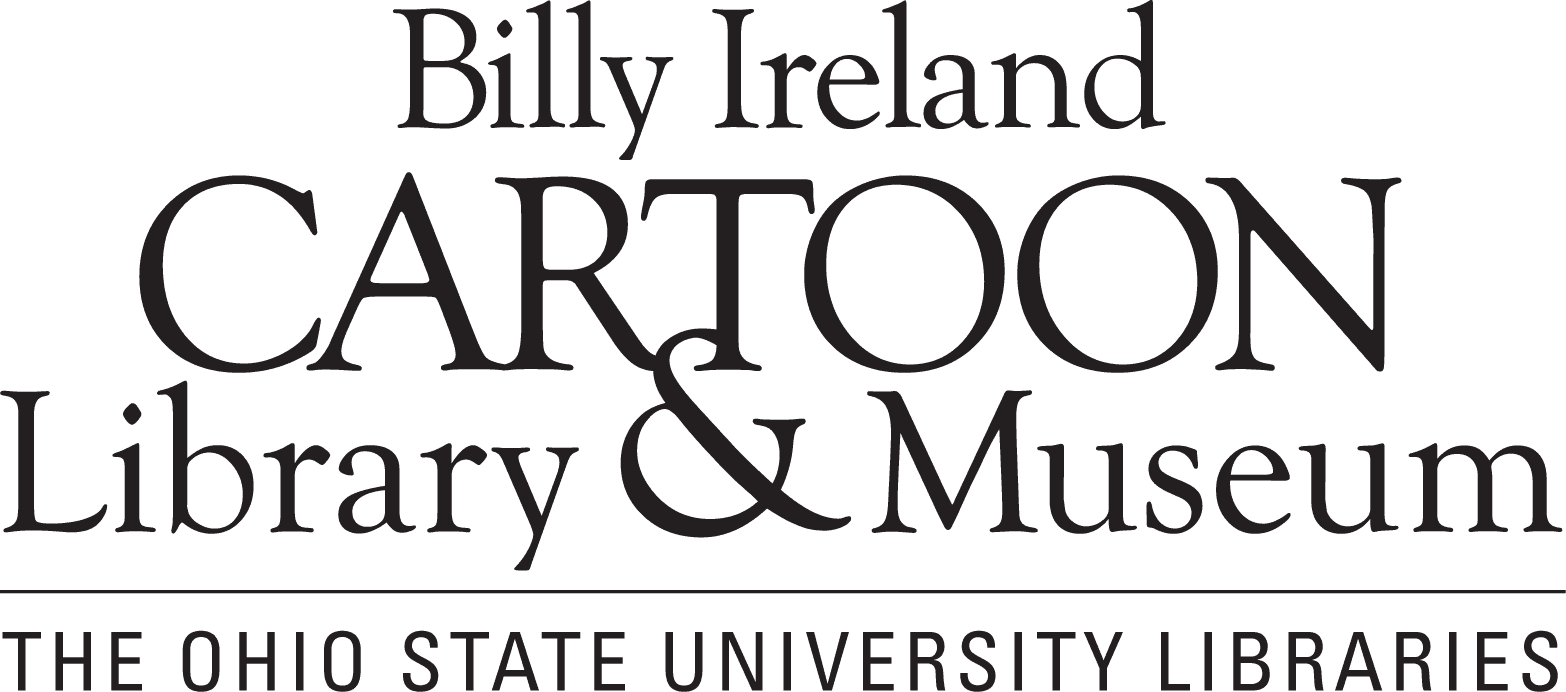Susan Kirtley is a Professor of English, the Director of Rhetoric and Composition, and the Director of Comics Studies at Portland State University, and recipient of our 2019 Lucy Shelton Caswell Award. Her research interests include visual rhetoric and graphic narratives, and she has published pieces on comics for the popular press and academic journals. Her book, Lynda Barry: Girlhood through the Looking Glass, was the 2013 Eisner winner for Best Educational/Academic work. She served as a judge for the 2015 Eisner Awards and is currently the Secretary for the Comics Studies Society and a member of the Executive Group on Graphic Narratives for the Modern Language Association.
Below, Dr. Kirtley reflects on her time spent researching at BICLM earlier this year:
If I could, I would live in the Billy Ireland. No, really. During my research trip this summer I fantasized about bringing my puffy red sleeping bag to the museum and camping out in Snoopy’s doghouse, conveniently located in the Reading Room. For a comics researcher or fan, the Ireland is a treasure trove, a place of magic and wonder, and frankly, I never wanted to leave.
I was honored to receive the Lucy Shelton Caswell Research Award to visit the Ireland and conduct research over the summer, and every day I spent there was a gift. Before I arrived I corresponded with the library staff, who were extremely knowledgeable and helpful. They asked great questions about my project and seemed genuinely excited about my research, a study of newspaper comic strips created by women during the time of the Women’s Liberation Movement. I’m fascinated by this particularly turbulent time in American history, and I believe that comic strips help illuminate this tumultuous period as women were negotiating numerous competing demands and belief systems. The strips of the time both reflected cultural narratives and helped shaped them.
When I finally reached Columbus I was giddy with anticipation, and upon entering the Ireland I was struck by the grandeur of the space, and this is no accident. Everything about the facility is designed to celebrate the rich history, tradition, and craft of comics and cartoons. Upon arrival I was greeted warmly and given instructions on how to care for the materials I was to review. I received my white cotton gloves for the handling of fragile materials (which made my hands look a bit like Mickey Mouse’s—a delightful bonus!), and the staff had set aside cart after cart full of boxes brimming with materials relevant to my research. It was heavenly.
Each box contained new treasures. I was able to study materials I could never have seen anywhere else, and the boxes revealed to me not just the products I was studying, but the process behind them. As I dug through the boxes I was able to page through Nicole Hollander’s art journals from school (she’d received a C), as well as her notes, sketches, original art, published pieces, and correspondence. Thus I was able to witness her entire process from idea to publication. Furthermore, Hollander’s papers revealed a hidden history through her archived correspondence and legal documents. These letters uncovered the rich community Hollander developed with other cartoonists, particularly female cartoonists. In one letter Jan Eliot encouraged Nicole to pursue self-syndication. In another letter Lynda Barry discussed Hollander’s problems with rights and permissions, an issue that became even clearer when I located the actual contracts. Hollander also exchanged epistles with Alison Bechdel, commenting on syndication and success. I never would have learned about this rich but concealed past without the treasures contained within the Ireland.
And, of course, there is the art itself. I reverently studied original artwork from Lynn Johnston, marveling at her precision and technique, with every dot and line carefully and confidently placed. I felt honored to hold the original art depicting Farley the dog’s heroic passing in my hands before flipping through letter after emotional letter from fans who were touched and angered by his death.
While I sat in the corner of the Reading Room, hour after hour, thrilled with each new box that the kind and patient staff brought out, I witnessed a family gathered to see original work from Bill Watterson. The staff had brought several samples for the mother, father, and young son to examine, and as the three huddled around the original art, pointing and exclaiming at each small detail I couldn’t help but smile. This family was celebrating comics, together. Instead of playing video games or watching YouTube, this small family unit was exclaiming over the genius of Calvin and Hobbes. I suppose that’s just the magic of the Ireland. I was sad when it was time for my visit to come to an end, and I couldn’t help but stare longingly at Snoopy’s doghouse one last time. There is so much more to see and I can’t wait to return. But next time I’m bringing my sleeping bag.
-Susan Kirtley





Recent Comments